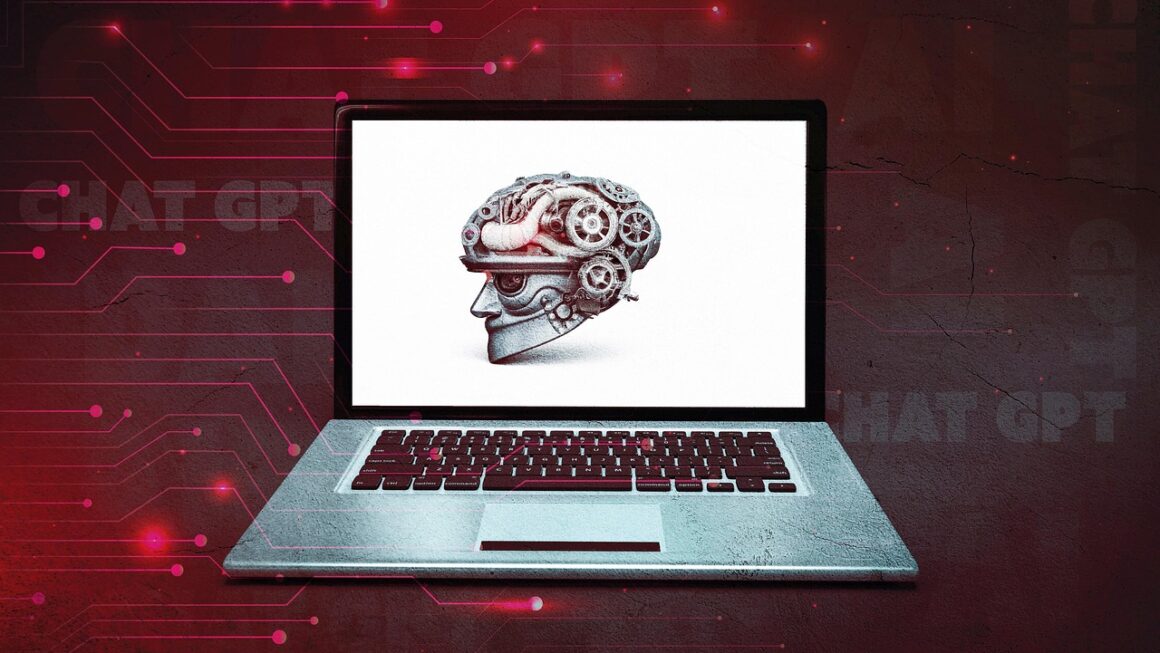Machine learning prediction is revolutionizing industries across the board, from healthcare to finance, and even entertainment. By leveraging algorithms trained on vast datasets, we can now forecast future outcomes with remarkable accuracy, enabling better decision-making and unlocking new opportunities. This blog post delves into the intricacies of machine learning prediction, exploring its core concepts, methodologies, and practical applications.
Understanding Machine Learning Prediction
What is Machine Learning Prediction?
Machine learning prediction involves using algorithms to learn patterns from historical data and then apply those patterns to predict future events or outcomes. This differs from traditional statistical modeling, which often relies on pre-defined relationships. Machine learning algorithms autonomously discover complex relationships within the data, making them particularly powerful for tackling complex prediction problems.
- Key Difference: Unlike traditional statistical methods, ML prediction doesn’t assume a specific underlying relationship. It learns directly from the data.
- Accuracy: The accuracy of the prediction heavily depends on the quality and quantity of the training data, as well as the chosen algorithm and its configuration.
Types of Prediction Problems
Prediction problems can be broadly categorized into:
- Regression: Predicting a continuous value, such as stock prices, temperature, or sales figures. Example: Predicting the price of a house based on its size, location, and number of bedrooms. Algorithms commonly used are linear regression, support vector regression, and decision tree regression.
- Classification: Predicting a categorical value, such as spam/not spam, fraud/not fraud, or disease diagnosis (positive/negative). Example: Identifying fraudulent transactions based on transaction history and user behavior. Algorithms commonly used are logistic regression, support vector machines (SVM), and random forests.
- Time Series Forecasting: Predicting future values based on a sequence of data points collected over time. Example: Predicting future sales based on historical sales data. Algorithms commonly used are ARIMA, Prophet, and LSTM.
Key Steps in the ML Prediction Process
Data Collection and Preparation
This is arguably the most crucial step. Garbage in, garbage out!
- Data Collection: Gathering relevant data from various sources (databases, APIs, web scraping).
- Data Cleaning: Handling missing values (imputation), removing outliers, and correcting inconsistencies.
- Feature Engineering: Transforming raw data into features that the machine learning algorithm can effectively learn from. This might involve creating new features by combining existing ones. For instance, calculating the “click-through rate” from “clicks” and “impressions”.
- Example: Imagine predicting customer churn. You might collect data on customer demographics, purchase history, website activity, and customer service interactions. Cleaning would involve handling missing age values (e.g., using the mean age). Feature engineering might involve creating a feature representing the “average order value” per customer.
Model Selection and Training
- Model Selection: Choosing the appropriate machine learning algorithm based on the type of prediction problem and the characteristics of the data. Consider factors like accuracy, interpretability, and computational cost.
- Training: Feeding the prepared data to the chosen algorithm to learn the underlying patterns. This involves adjusting the model’s parameters to minimize the error between the predicted values and the actual values. Common techniques include gradient descent and backpropagation.
- Hyperparameter Tuning: Optimizing the model’s hyperparameters to achieve the best possible performance. This can be done using techniques like grid search or random search.
- Example: If you’re predicting customer churn (a classification problem), you might choose a random forest or a gradient boosting algorithm. During training, the algorithm will learn the relationships between the features (e.g., average order value, website activity) and the likelihood of churn. Hyperparameter tuning might involve adjusting the number of trees in the random forest or the learning rate in the gradient boosting algorithm.
Model Evaluation and Validation
- Evaluation Metrics: Evaluating the model’s performance using appropriate metrics, such as accuracy, precision, recall, F1-score (for classification), or mean squared error (MSE) and R-squared (for regression).
- Validation: Assessing the model’s generalization ability by testing it on a separate validation dataset that was not used during training. This helps to prevent overfitting, where the model performs well on the training data but poorly on new data. Common techniques include k-fold cross-validation.
- Bias-Variance Tradeoff: Understanding the balance between bias (underfitting) and variance (overfitting) and adjusting the model accordingly.
- Example: After training a churn prediction model, you might evaluate its performance using accuracy and precision. If the accuracy is high but the precision is low, it means the model is correctly identifying most of the churners, but it’s also incorrectly labeling many non-churners as churners. Validation would involve testing the model on a separate set of customer data to ensure that it generalizes well to new customers.
Model Deployment and Monitoring
- Deployment: Making the trained model available for use in a real-world application. This might involve deploying the model to a web server, integrating it into a mobile app, or embedding it into a data pipeline.
- Monitoring: Continuously monitoring the model’s performance to ensure that it remains accurate and reliable over time. This involves tracking key metrics and retraining the model periodically with new data.
- Feedback Loop: Incorporating feedback from the real-world application to improve the model’s accuracy and performance.
- Example: A deployed churn prediction model might be integrated into a customer relationship management (CRM) system. The model would predict the likelihood of churn for each customer, and the CRM system could then trigger targeted interventions, such as offering discounts or personalized support, to prevent churn. Monitoring would involve tracking the model’s accuracy and the effectiveness of the interventions. A feedback loop might involve incorporating data on the success of the interventions into the model’s training data to improve its future predictions.
Common Machine Learning Algorithms for Prediction
Linear Regression
- Description: A simple and interpretable algorithm that models the relationship between a dependent variable and one or more independent variables as a linear equation.
- Use Cases: Predicting house prices, sales forecasts, and demand estimation.
- Strengths: Easy to understand and implement, computationally efficient.
- Limitations: Assumes a linear relationship between variables, sensitive to outliers.
Logistic Regression
- Description: A classification algorithm that predicts the probability of a binary outcome (e.g., 0 or 1).
- Use Cases: Spam detection, fraud detection, and medical diagnosis.
- Strengths: Easy to interpret, computationally efficient.
- Limitations: Only suitable for binary classification problems, assumes a linear relationship between variables.
Decision Trees
- Description: A tree-like structure that uses a series of decisions to classify or predict a value.
- Use Cases: Customer segmentation, risk assessment, and medical diagnosis.
- Strengths: Easy to understand and interpret, can handle both categorical and numerical data.
- Limitations: Prone to overfitting, can be unstable (small changes in the data can lead to large changes in the tree).
Support Vector Machines (SVM)
- Description: A powerful algorithm that finds the optimal hyperplane to separate data points into different classes.
- Use Cases: Image classification, text classification, and medical diagnosis.
- Strengths: Effective in high-dimensional spaces, robust to outliers.
- Limitations: Computationally expensive, difficult to interpret.
Random Forests
- Description: An ensemble learning method that combines multiple decision trees to improve accuracy and reduce overfitting.
- Use Cases: Image classification, object detection, and fraud detection.
- Strengths: High accuracy, robust to overfitting, easy to use.
- Limitations: Can be difficult to interpret, computationally expensive.
Practical Applications of ML Prediction
Healthcare
- Predicting disease outbreaks and patient readmission rates.
- Personalized treatment plans based on individual patient characteristics.
- Drug discovery and development.
Finance
- Fraud detection and credit risk assessment.
- Algorithmic trading and portfolio optimization.
- Predicting stock market trends.
* According to McKinsey, AI in financial services could create up to $1 trillion in additional value annually.
Retail
- Predicting customer demand and optimizing inventory management.
- Personalized recommendations and targeted advertising.
- Churn prediction and customer lifetime value estimation.
Manufacturing
- Predictive maintenance and equipment failure prediction.
- Process optimization and quality control.
- Supply chain optimization.
Conclusion
Machine learning prediction offers unparalleled opportunities to improve decision-making across various industries. By understanding the core concepts, carefully selecting the appropriate algorithms, and meticulously preparing the data, businesses can unlock valuable insights and gain a competitive edge. While the field is constantly evolving, mastering the fundamentals outlined in this post will provide a solid foundation for navigating the exciting world of ML prediction. Remember to focus on data quality, model evaluation, and continuous monitoring to ensure the accuracy and reliability of your predictions.




